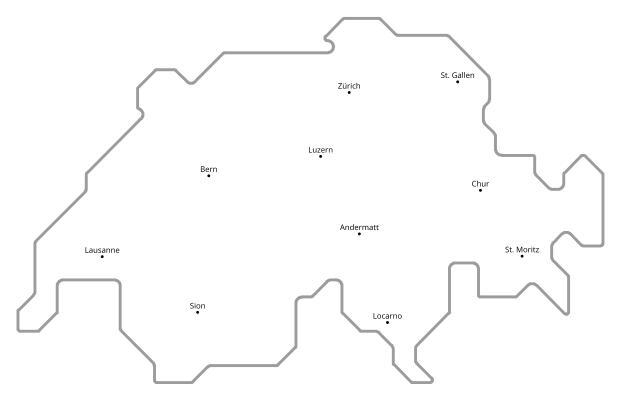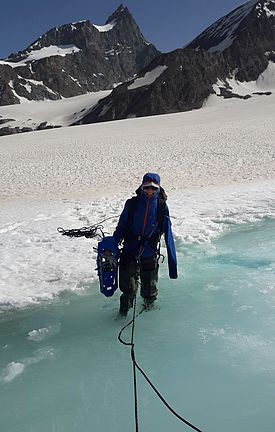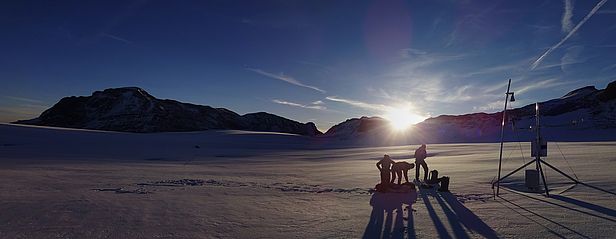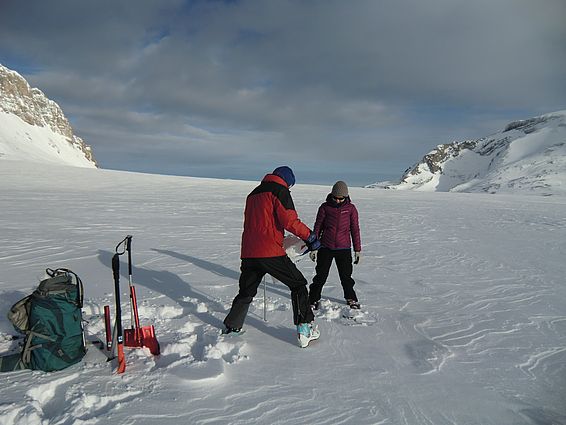Since 1 July 2021, the WSL Institute for Snow and Avalanche Research (SLF) has had a new Alpine Environment and Natural Hazards research unit (RU). As part of the Climate Change, Extremes and Natural Hazards in Alpine Regions Research Centre (CERC), the RU carries out research in the fields of permafrost, alpine mass movements, mountain ecosystems and alpine remote sensing. Dr Nadine Salzmann took over as head of the new unit in mid-October 2021.
Congratulations on your appointment as head of the Alpine Environment and Natural Hazards research unit. What interests you most about your new role?
Nadine Salzmann: The new research unit and the CERC are both very timely. I think this is the perfect starting point to find solutions to the pressing issues of climate change in the mountains. For me personally and in terms of the subject matter, this development has come just at the right time.
The fact that the new unit is highly interdisciplinary really suits me. In my research I've always focused on the entire cryosphere-atmosphere system, but I've also looked at the effects of climate change on ecosystems and people, as well as at adaptation strategies, especially in relation to risks and hazards in the mountains and downstream water use.
Could you tell us a bit more about your interests?
I'm a geographer at heart, with a particular interest in the cryosphere and atmosphere/climate. As a result, I've done a lot of research on permafrost and glaciers, which means I'm pretty familiar with snow, among other things. Having strong ties with the climate research community has always been important to me. Modelling has been a big part of my job, but I've also done plenty of fieldwork myself. In addition, I've been involved in a number of applied projects, addressing for example climate adaptation measures in the Himalayas and the Andes, often in conjunction with the government-run Swiss Agency for Development and Cooperation (SDC). Consequently I'm familiar with many of the methods represented in the new RU. I see myself as a generalist, but one with enough in-depth expertise to forge links between the different areas.
Had you had dealings with the SLF in your previous work?
Not that many, but those I did have were mostly to do with permafrost and snow. I did research with Marcia Phillips on a Sinergia project for the Swiss National Science Foundation (SNSF) on permafrost in the Alps. I've also worked with Michael Lehning, and I've collaborated with Massimiliano Zappa from WSL's Birmensdorf site on an SDC climate adaptation project in Peru. Also, while I was doing my PhD, I was involved in the FrauSchafftWissen mentoring programme for female scientists, where I had the opportunity to work with various women from WSL.
What will you bring to the SLF from your previous research?
I'd definitely like to continue with snow measurements using cosmic ray sensors. Then of course I bring my network, in areas such as radar remote sensing, climate risks and climate adaptation. Another aspect I'd like to contribute is research on extreme events and 'compound extreme events', such as the effects of several years of drought combined with heatwaves and storms on the function of protection forests. We're running a project in this area with the Federal Office for the Environment (FOEN) and the SNSF.
I think there's a lot more potential for collaboration on permafrost and snow hydrology, with links to weather and climate extremes. Here, I'm helped by the fact that I've worked extensively with climate modellers since my PhD. Integrating the climate component into our understanding of processes is very important to me. In other words, we shouldn't just look at individual events, but rather try above all to better understand the processes and their dynamics in the short and long term.
What's your vision for the new RU?
I want us to be an open, agile and 'easy-going' RU and to be perceived that way from the outside. The unit is already working really well together. It's important to me that we build a strong unit within the CERC and in partnership with it. I also want to forge ties with WSL as a whole and with the ETH Domain institutions, as well as universities and other research institutes. Cooperation with ALPOLE in Valais, and with similar institutions abroad, for example in Innsbruck [in Austria], Norway, the United States and Asia, will certainly be a key part of this.
So on the one hand, international exchange is important to me, but, on the other, I also value our strong local and regional presence in Davos and the canton of Grisons. One of my strengths is that I'm not afraid to get out there and make contacts. We should be an organisation that is open to cooperation and interaction with authorities and the public.
Besides that, I want my RU to also address issues that just seem too big and complex to tackle right now, or which aren't on the agenda at all yet. We always have to try to think one step ahead. I'm aware that this will take time and effort, but I expect my team to be willing to engage with that challenge too. As far as I'm concerned, the most interesting research topics are the interdisciplinary ones. And interdisciplinarity is the key to solving our current problems.
How do you envisage collaborating with internal and external partners?
I want us to be an inclusive RU. My impression is that exchange within the SLF is already running smoothly, and thanks to Peter Bebi's group we also have strong ties with the 'green' RUs at WSL. I'd like to get to know the economics and social sciences researchers at WSL better and bring them on board for our projects. The CERC as a whole is also promoting collaboration. I envisage, for example, making Davos a hub for the exchange of ideas. We could, for instance, set up a series of seminars or some topic-specific think tanks to promote this exchange.
And a personal question to end with: How are you looking forward to living and working in Davos?
I'm relishing the prospect and am delighted to have this opportunity. I love the mountains. They give me such a lot and I go there as often as I can. Although I've always lived in beautiful places, including Lucerne and Boulder (Colorado), it's a wonderful opportunity for me now to be able to actually live and work in the mountains.
Thank you very much for talking to us. We wish you all the best with your new job at the SLF.
Links
Contact
Copyright
WSL and SLF provide the artwork for imaging of press articles relating to this media release for free. Transferring and saving the images in image databases and saving of images by third parties is not allowed.



